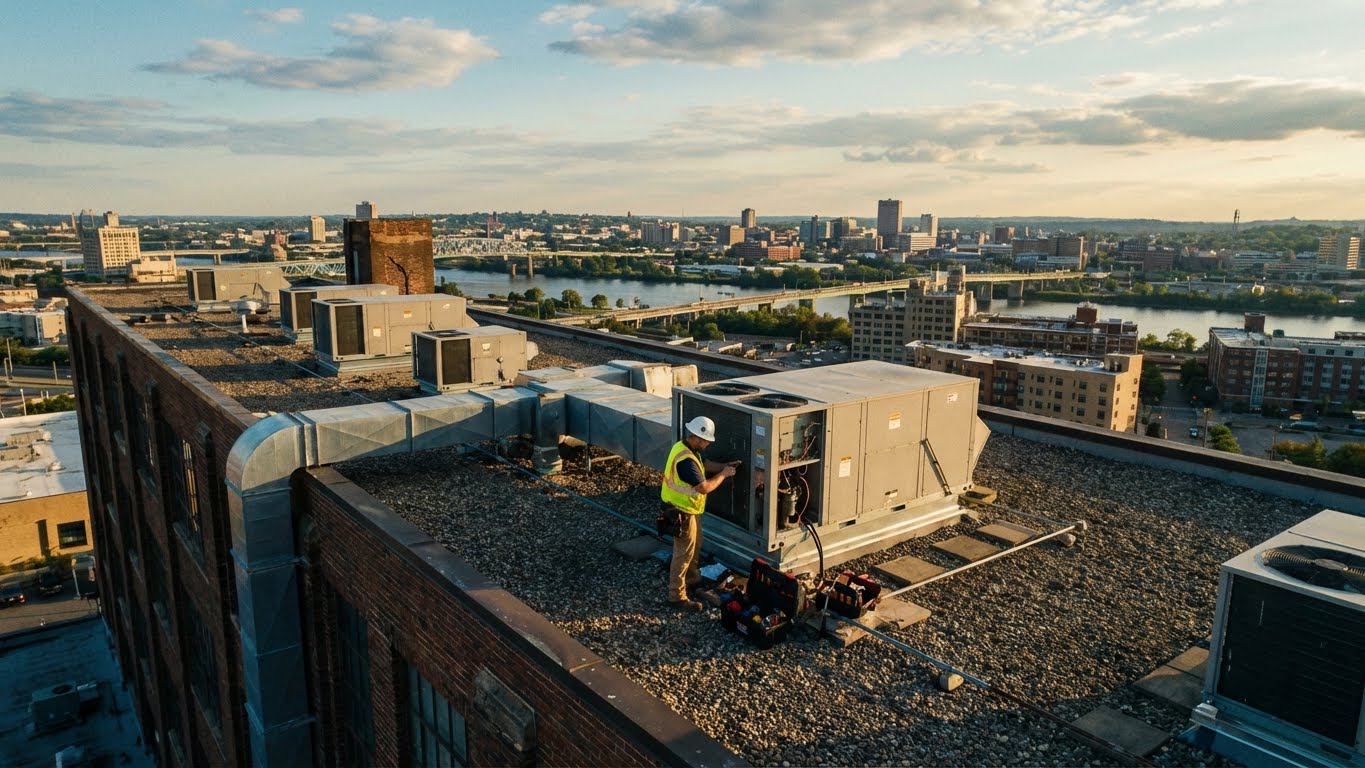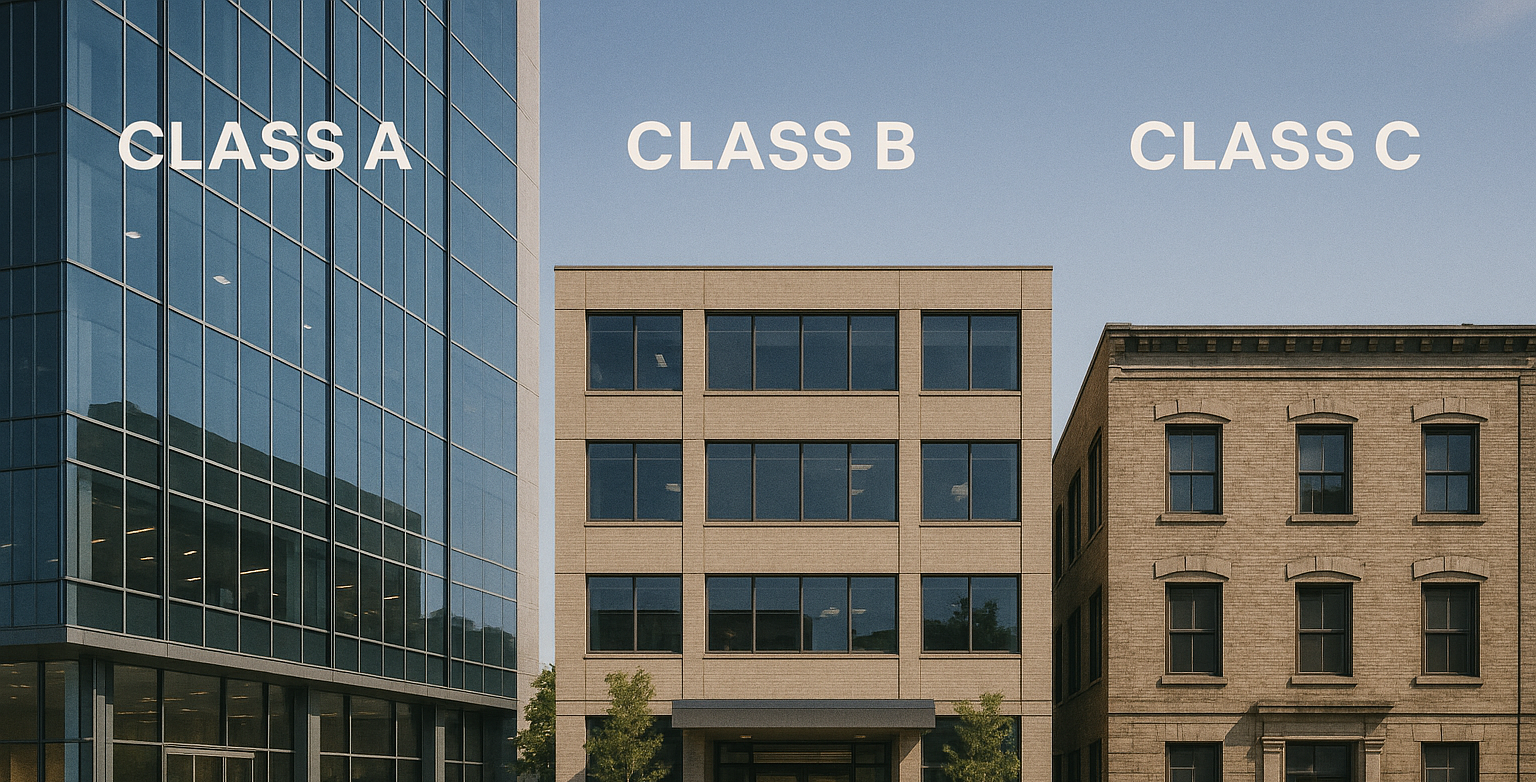As you well know, an efficient work order system is vital for keeping tenants happy and operations running smoothly. In fact, reliable maintenance isn’t just a “nice-to-have” – it’s a key factor in tenant satisfaction and retention.
When tenants feel ignored or face constant repair delays, they won’t stick around. An effective work order management process can prevent those issues, boost your team’s productivity, and even reduce long-term maintenance costs. Below, we share seven actionable tips to elevate your building’s work order system. Each tip will help you streamline maintenance tasks, enhance tenant satisfaction, and support your bottom line.
1. Make It Easy for Tenants to Submit Work Orders
The first step to improving your work order system is to simplify how tenants submit maintenance requests. If reporting an issue is cumbersome, tenants may delay or avoid it, leading to bigger problems later. You want to provide a user-friendly, convenient way for tenants to reach your team. Ideally, offer a digital work order system or portal that tenants can access on their computer or smartphone. Online work order software allows tenants to describe issues, attach photos, and track the status of their requests. This transparency reassures tenants that their concerns won’t disappear into a void.
Offering multiple easy channels for work orders, such as a tenant mobile app, an online form, or a dedicated email, removes friction from the reporting process. Make sure to communicate these options clearly to your tenants. For example, when new tenants move in, show them how to use your work order management portal or give them a simple instruction sheet. The goal is to ensure anyone can quickly report a leaky faucet or HVAC issue the moment they notice it. When tenants find it effortless to request help, problems are identified and addressed sooner. This not only prevents small maintenance issues from becoming big headaches, but also demonstrates that you value your tenants’ comfort.
An accessible system ultimately improves tenant satisfaction because tenants feel heard and know exactly how to get help when needed. In turn, happy tenants are far more likely to stay longer – a study of thousands of commercial tenants found that even a one-point increase in satisfaction boosts lease renewal likelihood by around 8%. Put simply, by making maintenance requests easy, you’re laying the groundwork for stronger tenant loyalty and retention.
2. Centralize Your Work Order Tracking
If maintenance requests are coming at you from all directions – paper notes, emails, phone calls, and hallway conversations – it’s time to centralize your work order tracking. A scattered approach makes it too easy for a request to fall through the cracks. Instead, bring all work orders into one unified system, ideally a digital work order tracking software that serves as the single source of truth. By digitizing your work order management, you ensure that every request is logged, assigned, and monitored in one place. This visibility is crucial for you and your team to stay organized and accountable.
Many property teams are still catching up in this area. Industry data shows that a large portion of facilities continue to rely on manual methods – nearly 39% of organizations still use paper records for maintenance tracking, and many others use basic spreadsheets. If you’re in that boat, moving to a dedicated facility work order software can be a game changer. With a modern system, you can log new requests as soon as they come in (whether they arrive via the tenant portal, email, or a call), and track them through completion. All team members see the same dashboard of open work orders, which reduces confusion.
For example, your maintenance supervisor can view all pending tasks instead of rifling through sticky notes or email printouts. Technicians in the field can receive updates on their mobile device, ensuring they know about new work orders or priority changes in real time. By centralizing information, you eliminate duplicate entries, lost notes, and miscommunication. The result is a smoother workflow where everyone – property managers, maintenance techs, and even tenants – can be on the same page about what needs to be done.
Centralized work order tracking also means you build a historical record of all work on your property. Over time, you can easily look up when that rooftop unit was last serviced or how often Suite 400’s office has reported plumbing issues. These records are invaluable for budgeting, forecasting repairs, and identifying patterns (more on that later). The bottom line: a centralized work order system brings order and efficiency to your maintenance process. It frees your team from juggling disparate information and allows them to focus on actually getting the work done. And when your team is responsive and organized, tenants notice the difference – they experience quicker fixes and fewer errors, which strengthens their trust in your management.
3. Set Clear Timelines for Work Orders
Not all maintenance requests are created equal. Replacing a burned-out light bulb in a hallway isn't as urgent as fixing a burst pipe. To improve your work order system, it’s important to prioritize requests and set clear timelines for resolution. Start by establishing categories or priority levels (e.g., Emergency, Urgent, Routine) and define target response times for each. An emergency (like a major leak, electrical hazard, or security issue) might warrant immediate action within hours, whereas a routine cosmetic fix might be addressed within a few days. By assigning priority levels when work orders come in, you ensure your team tackles the most critical issues first and tenants with serious problems get swift relief. This structured approach prevents less important tasks from accidentally crowding out urgent ones in your workflow.
Equally important is communicating realistic timelines to tenants. When a request is received, let the tenant know the expected timeframe for resolution based on its priority. For example, “We’ve marked your heating issue as urgent and a technician will be there by tomorrow,” or “This is a routine request, we’ve scheduled it for early next week.” Tenants greatly appreciate knowing what to expect, even if the fix isn’t instant. In fact, responsiveness and managing expectations are key parts of tenant satisfaction. These expectations underline why having target timelines is so critical. By setting internal deadlines and striving to meet them, you’ll align more closely with what tenants want.
Of course, not every repair can be done as fast as tenants might like, but having a prioritization system helps you triage effectively. When an urgent issue arises (say an elevator breakdown or no A/C on a hot day), your team can confidently put lower-priority tasks on hold and focus on the emergency – because you have a framework that justifies it. This leads to faster response on truly vital issues. And by keeping everyone informed (“We’re aware of the issue and working on it, expected fix by end of day.”), you reassure tenants that you’re on top of the situation. Over time, consistently meeting promised timelines builds a reputation for reliability.
Tenants come to trust that if something is wrong, you’ll handle it promptly. This trust directly impacts retention: tenants who feel their problems are resolved quickly and fairly are far more likely to renew leases. On the flip side, unresolved or chronically slow maintenance is a top reason tenants decide not to renew. Don’t let that happen – put a priority system in place and stick to it. You’ll prevent emergencies from spiraling, address routine issues before they pile up, and maintain a comfortable, safe environment that tenants appreciate.
4. Keep Tenants Informed
Even the best maintenance team needs time to diagnose and fix issues, but what really sets apart a great work order system is how well you communicate with tenants throughout the process. One of the biggest tenant complaints in property management is feeling left in the dark: they file a work order and then hear nothing for days, wondering if anyone is actually working on it. To avoid this, make transparent communication a standard part of your work order workflow. This means promptly acknowledging new requests, providing status updates, and closing the loop with confirmation once a job is completed. A quick email or message like “Got your request about the HVAC on 4th floor, our technician will be there this afternoon” can instantly put a tenant at ease. They know you received their request and are acting on it. If a repair is delayed (perhaps awaiting a part or contractor), tell the tenant. It’s better for them to hear “The part is on order and we expect to have it by Tuesday” than to hear nothing at all. In other words, tenants are more forgiving of a slightly longer fix time if you keep them updated along the way. They want proactive updates and clear timelines – essentially, respect and transparency.
To implement this, consider using your work order software to automate some communications. Many work order management platforms let you set up automatic email or text alerts when a request is received (“Your request has been opened, reference #1234”), when it’s in progress (“Your issue is being worked on”), and when it’s resolved (“Your work order is completed, please let us know if everything is satisfactory”). Even if you don’t have fancy software features, your team can manually send updates at key points. The difference this makes is huge for tenant trust. Remember, as a property manager you’re not just fixing a problem, you’re providing a customer service experience. If something takes longer than expected, explaining the reason can turn a potentially negative experience into a neutral or even positive one. Tenants feel respected when you treat their issue with importance and keep them in the loop.
The payoff for good communication is clear: it boosts tenant satisfaction and loyalty. Consider this scenario – Tenant A and Tenant B both had their air conditioning fail on a hot day. Tenant A’s property manager immediately acknowledged the complaint, provided a portable fan, and updated them twice a day on repair progress until the A/C was fixed 48 hours later. Tenant B’s manager took the same 48 hours to fix the A/C but never communicated until showing up with the replacement part. Which tenant is likely happier? Almost certainly Tenant A, because they never felt ignored. This aligns with broader data: poor communication can lead tenants to feel their management is unresponsive, and unresponsive management is a major driver of tenants deciding to leave. Don’t let maintenance requests “vanish into a black hole” from the tenant’s perspective. By keeping tenants informed, you show that you care and that you’re actively managing their issue. This supportive, transparent approach will make tenants more patient and cooperative, even when repairs are challenging. In the long run, you’ll foster a positive relationship where tenants feel comfortable reporting issues (so you catch problems early) and confident that you’ll take care of them. It’s a virtuous cycle of trust that benefits everyone.
5. Leverage Work Order Data to Improve Performance
Your work order system isn’t just a tool to react to problems – it’s also a goldmine of information that can help you run your building more efficiently over time. By reviewing data from your work orders, you can spot trends, measure your team’s performance, and identify ways to improve operations proactively. For example, look at your work order records from the past 6 or 12 months. Do you see repeat issues in the same area or with the same piece of equipment? Maybe that one elevator has needed repair three times this quarter, or several tenants keep reporting HVAC issues on the south side of the building.
These patterns are red flags for deeper problems. It might be time to schedule a more comprehensive fix or replacement, rather than doing Band-Aid repairs. Analyzing past work orders helps you identify recurring equipment failures and inefficiencies in your maintenance plan. With that insight, you can take targeted action – perhaps increasing preventive maintenance on a troublesome system, or investing in an upgrade that will save headaches down the line.
Work order data can also illuminate how well your team is doing. Key metrics to watch include average response time (how quickly do you acknowledge a request?), average completion time (how long to close a ticket?), and the percentage of work orders completed on time versus past the target date. Monitoring these maintenance KPIs gives you a clear baseline to improve against. Say you discover that it currently takes your team an average of 3 days to complete non-urgent work orders. If tenant feedback suggests that’s too slow, you can set a goal to bring it down to 2 days on average and track progress.
Some work order tracking software will generate these reports for you automatically. If not, even a simple spreadsheet log can be used to calculate metrics. Importantly, share these findings with your maintenance staff. When your team sees data on their performance, it creates accountability and motivation. You can recognize high performers (e.g., a technician with a very quick turnaround) and coach where there are delays.
Additionally, data can highlight resource bottlenecks. If you consistently have a high number of open work orders or a growing backlog, that might indicate you need additional maintenance staff or better scheduling. It’s hard to argue for extra budget or hires without evidence – but a report showing that requests have doubled while staff count stayed flat is compelling data to take to ownership. By reviewing your processes, you might find simple wins – such as staging commonly used supplies closer to where they’re needed, or scheduling jobs in the same area together to cut down travel time. With your own work order history, you can pinpoint if such delays are happening and take action (for example, improving communication protocols so techs aren’t stuck waiting for approval or clarification).
In short, treat your work order log as a learning tool. Set aside time monthly or quarterly to review the data. Celebrate what’s working – maybe your team consistently handles high-priority issues within a few hours, or tenant satisfaction scores improved after you started same-day follow-ups. And for the areas that need work, involve your team in brainstorming solutions. Continuous improvement is the hallmark of a truly effective work order system. By leveraging data, you’ll make smarter decisions that boost productivity, cut costs, and keep the building running better than ever.
6. Embrace Preventive Maintenance
Running a commercial property, you know that preventing problems is far better than constantly reacting to them. A crucial way to improve your work order system is to incorporate preventive maintenance tasks into it. Preventive maintenance means regularly servicing equipment and performing routine inspections to catch issues before they turn into failures. By scheduling these tasks through your work order software, you can ensure they happen consistently. For example, you might create recurring work orders for things like quarterly HVAC tune-ups, monthly roof checks, or annual sprinkler system testing. Building these into your system’s calendar keeps your team proactive: instead of waiting for something to break, you’re out there maintaining it and potentially avoiding downtime or emergency repairs.
The benefits of preventive maintenance are well documented. Taking a proactive approach saves money, time, and tenant frustration. That’s because emergency repairs or replacements are often more extensive (and happen at inconvenient times). Similarly, neglecting small fixes tends to compound costs. One study famously found that every $1 of maintenance you defer will cost about $4 in capital repairs later. It’s the classic “pay me now or pay me later” principle – and paying later is far more expensive.
Using your work order system to manage preventive maintenance ensures these important tasks don’t slip through the cracks. It’s easy to get so caught up responding to tenant requests (the urgent stuff) that the non-urgent upkeep gets postponed – until it becomes urgent. A good building maintenance software will let you set up recurring tasks or reminders. Take advantage of that. Generate a work order for “Inspect roof drains” every September, or “Service elevators” every X number of runs or months. Assign these just like any other work order and track their completion. You can even tag them as “Preventive” in your system, so you can report on how much of your team’s work is proactive vs reactive.
7. Standardize the Work Order Process
Even the best work order software or procedures won’t accomplish much if your team isn’t on board or properly trained. To truly improve your building’s work order system, invest in training and establish clear processes for your staff. Start with initial training when you introduce any new system: walk your maintenance technicians, property admins, and any other users through how to use the work order software, how to update statuses, how to close out tickets, and so on. Provide written guidelines or a quick-reference cheat sheet if needed. The goal is to ensure everyone follows the same steps – for example, maybe your process is that when a tech finishes a job, they must log a completion note and mark the work order “Resolved” in the system before the end of the day. These consistent habits are what keep the system data accurate and useful. If one person isn’t using the system properly (like handling requests offline and not logging them), it can create confusion and gaps that undermine the whole effort.
Don’t assume a one-time training is enough. Make it a point to periodically refresh training, especially if there are system updates or if you notice process slip-ups. Also, train new team members as part of onboarding – if a new hire doesn’t learn the work order procedures from day one, they might develop their own ad-hoc methods that deviate from your standards. It’s also valuable to explain why the system is important. When maintenance staff understand that using the software and following the workflow leads to faster response times, happier tenants, and less chaos, they’re more likely to embrace it rather than view it as extra paperwork. Encourage a culture where the work order process is treated as the backbone of maintenance operations – because it is. If you encounter resistance (which sometimes happens when implementing any new tech or change), address it through open dialogue. Perhaps a technician is frustrated by having to type up notes; maybe providing a mobile tablet or dictation feature could help. Show the team what’s in it for them: a good system can make their jobs easier – no more chasing down info, fewer angry calls because the system kept tenants informed, clearer priorities each day, etc.
These steps all work together to create a robust work order management strategy. With these improvements, you’ll prevent small issues from snowballing, resolve problems before they upset tenants, and create an environment of trust and reliability. Tenants will feel confident that “if something goes wrong in this building, management will take care of it promptly and professionally.” That peace of mind is priceless – it leads to contented tenants who stay longer and even spread the word that yours is a great building to be in. Meanwhile, your maintenance team will likely find their jobs less stressful and more rewarding when they’re empowered with a good system instead of fighting fires chaotically.
Remember, efficient work order management is the backbone of excellent property management. It might not be glamorous, but it’s what keeps the lights on (literally) and the people in the building happy. By following the tips above, you position yourself as a responsive, forward-thinking property leader, the kind who keeps operating costs in check while delivering top-notch service.
Over time, you’ll notice lower maintenance costs from preventing expensive failures, higher productivity as your team eliminates wasted time, and a stronger community vibe as tenants experience consistent care. By putting these tips into action—and leveraging tools like Cove’s work order management—you can streamline requests, keep everyone informed in real time, and make sure nothing slips through the cracks. You’ll be supported every step of the way by the positive results that follow: improved tenant engagement, a healthier bottom line, and a building that runs like clockwork. Here’s to a smoother, smarter work order system and all the benefits it brings to you and your stakeholders.

.png)




.png)